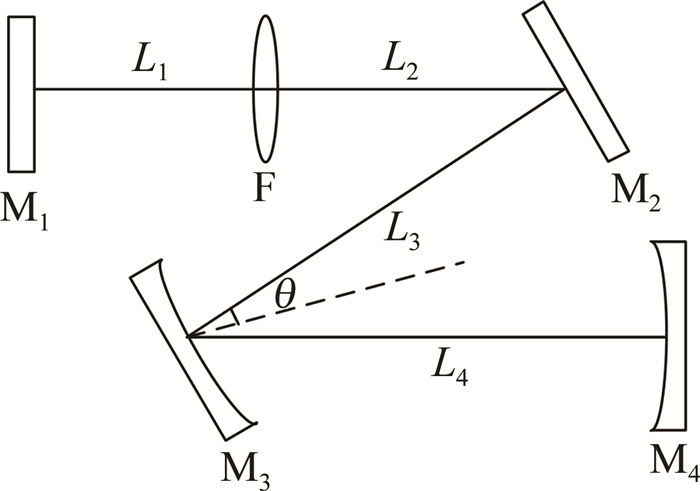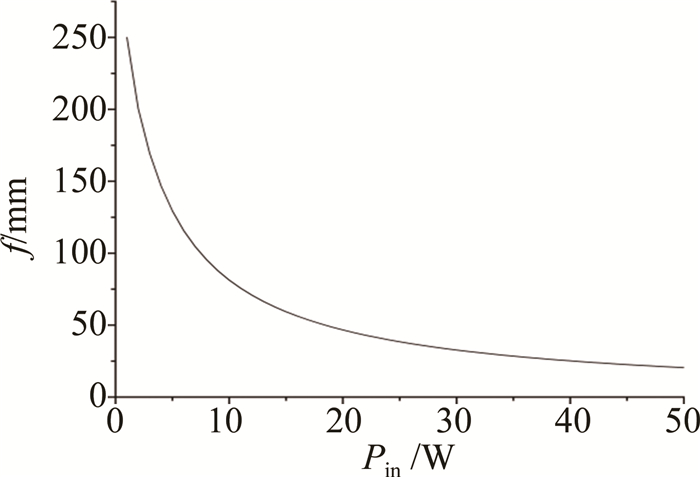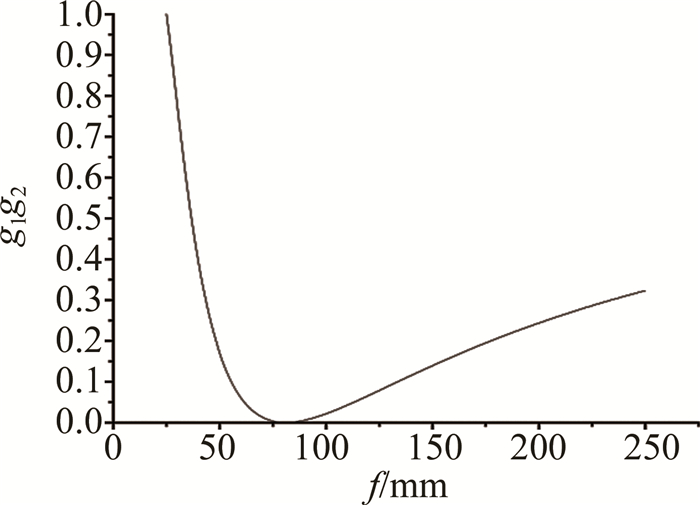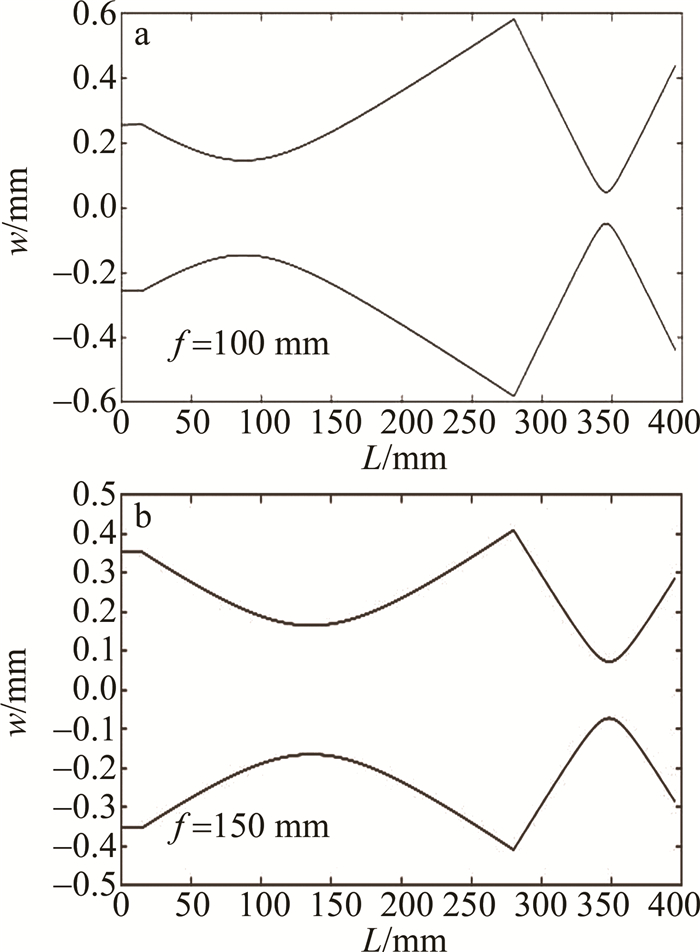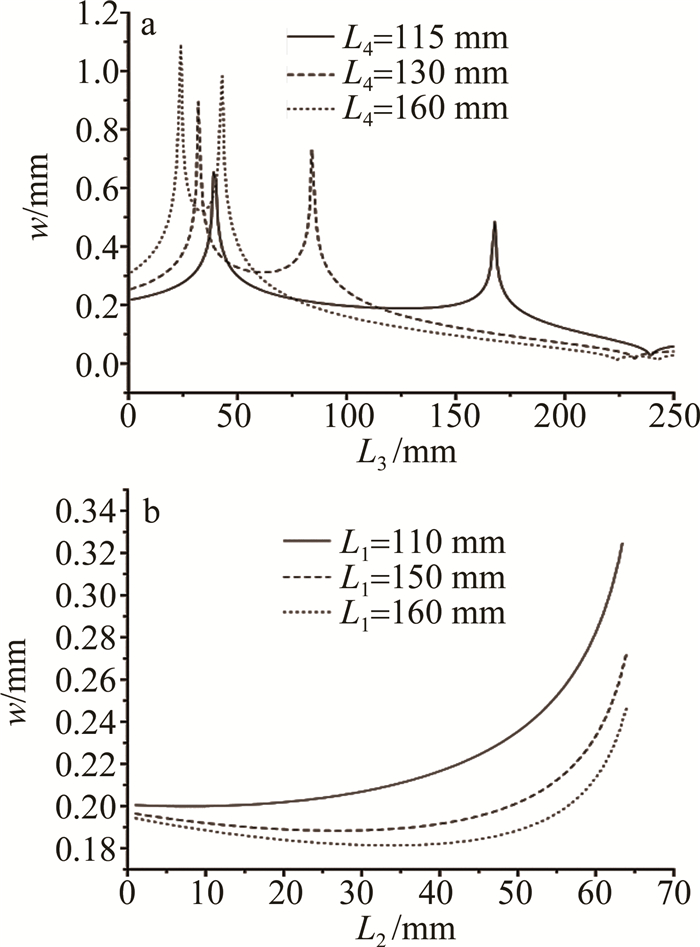HTML
-
全固态激光器由于其高效性、光束输出稳定、光束质量高等优势,在医疗、安全检测、材料加工[1-2]、原子实验等领域得到广泛应用[3],并随着新型、功能优异的增益介质陆续被研发出来,全固态激光器得到更好的发展[4]。Z型腔的全固体激光器可以实现更长的光程、更小的体积和更高的储能效率,在波长调谐、模式选择以及实现锁模脉冲[5]等方面更具有优势,但是由于Z型谐振腔涉及到的腔参数较多(分臂长度及镜面曲率半径等),且随着抽运功率的增加,激光晶体的热透镜效应逐步显著[5],对谐振腔的稳定性起到破坏作用,因此,Z型谐振腔的稳定性问题一直是影响激光器正常运转的重要因素。2004年, LI等人对由Nd∶YVO4(掺钕钒酸钇晶体)组成的端面抽运Z型折叠腔做了深入的理论分析,得到了在激光器正常工作条件下,激光晶体的热焦距及谐振腔臂长度的变化范围[7],而没有考虑高斯光束光斑的大小变化情况。QIN等人曾对端面抽运的Z型固态激光器腔体进行了仿真,并给出了其稳定性与高斯光束束腰半径和腔长之间的联系[8],但未考虑腔镜曲率半径对高斯光束半径的影响。HOU等人对双端抽运的折叠腔进行了仿真,并据此得出结论:调整谐振腔的臂长,可以改变共振腔的稳定区域; 还利用相同的光学器件,分别设计了长、短腔体,并做了比较[9],但只考虑了热透镜焦距对谐振腔的稳定性参量和光斑半径的影响。ZHANG等人在对谐振腔稳定性进行研究时,探究了谐振腔不同臂长时,激光晶体中心处的光斑大小以及谐振腔的稳定区域[10],并未考虑镜面曲率半径对高斯光束光斑大小的影响。
本文中综合考虑Z型折叠腔的臂长、镜面曲率半径、晶体热透镜效应等各种因素对高斯光束的影响,针对半导体激光二极管(laser diode, LD)端面抽运折叠腔的Nd∶GdVO4(掺钕钒酸钆晶体)激光器,应用ABCD传输矩阵理论,通过编程模拟,对谐振腔的稳定进行了全面的计算和分析,为Z型折叠腔激光器的优化提供了可靠的依据。
-
Z型折叠腔的结构如图 1所示。图中, LD为二极管抽运激光器,抽运光经光纤和耦合透镜后注入谐振腔,M1为抽运端镜,曲率半径为R1;激光晶体以Nd∶GdVO4为例;M2为第一反射镜,曲率半径为R2;M3为第二反射镜,曲率半径为R3;M4为输出镜,曲率半径为R4; M1到晶体、晶体到M2、M2到M3、M3到M4的距离分别为L1、L2、L3、L4; θ为折叠镜M3处的折叠半角。
在LD单端抽运激光器中,抽运过程中晶体会产生热效应[11],进而引起介质折射率、热膨胀系数、热导率等物理量的变化,从而影响激光在介质中传播的方式和性能[12-13]。产生的热效应中最主要的是热透镜效应,其它的则要弱得多,可以忽略不计[14]。
当激光晶体采用端面抽运时,可以将其近似视为一个焦距是f的热透镜,热透镜与抽运功率之间的关系为[15]:
式中: $w_{\mathrm{p}}$表示抽运光斑半径; $K_{\mathrm{c}}$是热传导系数; $\mathrm{d} n / \mathrm{d} t$是晶体的光热系数; $\alpha$是晶体的吸收系数; $l$表示晶体长度$; P_{\mathrm{th}}=\left(1-\lambda_{\mathrm{p}} / \lambda\right) P_{\mathrm{p}}$, 是热载荷功率$; P_{\mathrm{p}}$是抽运光功率; λp为抽运波长; λ为激光波长。
不引入像散对光束的影响[16],以M1为参考面,则腔内的往返矩阵为:
式中: a, b, c, d分别表示高斯光束往返矩阵对应的4个元素。
谐振腔的稳定性参量g1和g2为:
谐振腔的稳定性条件为:
激光晶体处的光斑半径为[17]:
抽运端镜M1处的光斑半径为[8]:
后端镜M4处的光斑半径为:
-
所选激光晶体Nd∶GdVO4各项特性参数[18]如表 1所示。
absorption coefficient 7.4 mm thermal conductivity 11.7 W/(m·K) thermal-optical coefficient 4.7×10-6 K doping concentration 0.5% size of crystal 5 mm×5 mm×10 mm Table 1. Nd∶GdVO4 crystal characteristic parameters
结合表 1和式(1),抽运光束在晶体上的半径wp=0.25 mm,对其进行数值仿真,得出了热透镜的焦距和抽运光功率之间的曲线。
热透镜的焦距与抽运光功率呈反比例关系,随着抽运光功率的增加,f会逐步降低,热透镜效应愈加显著[19]。从图 3可知, 所设计的折叠腔允许激光晶体的热透镜焦距变化范围为25 mm~250 mm。
折叠腔的各个参量为:L1=15 mm,L2=15 mm,L3=250 mm,L4=115 mm,R2=R1=+∞ mm,R3=100 mm,R4=50 mm。
图 4表示f在(0 mm,250 mm)时,谐振腔稳定性参量g1g2的变化。随着f取值的增大,稳定性参数g1g2先减小到0又增大。从图 4可知,所设计的折叠腔允许激光晶体的热透镜焦距变化范围有两个: (25 mm,81 mm)和(81 mm,250mm)。
折叠腔参量与图 4描述的腔参量保持一致,设激光晶体热透镜焦距f分别为100 mm和150 mm。从图 5可以看出Z型腔整个腔内的光束大小分布情况。图中, L表示谐振腔腔长,这个腔具有至少两个束腰位置。可在分臂较长的位置处插入Q开关或非线性光学晶体光学元件。由图 5可知,当f=100 mm时,与前面拟定的抽运光束大小接近,可以达到非常好的匹配。
如图 6a所示, 腔的各个参量为:L1=L2=150 mm,R2=R1=+∞ mm,R3=100 mm,R4=50 mm,L4分别取不同的值时,随着L3的增加,束腰半径的变化并不是单一的,在所取范围内出现2个尖峰,在激光输出稳定条件下,L4=115 mm时,L3的允许取值范围在; L4=130 mm时,L3的允许取值范围在;L4=160 mm时,L3的允许取值范围在。从图 6可知, 随着L4变小,光束的稳定区间在变大,束腰半径在变小,束腰位置向M3靠近。
如图 6b所示,腔的各个参量为:R2=R1=+∞ mm,R3=100 mm,R4=50 mm,L3=250 mm,L4=115 mm,L1分别取不同的值时,随着L2的增加,臂长L1越大, 束腰半径越小,且束腰位置远离输入端镜。
图 7中折叠腔的其它参量为:R1=+∞ mm,R3=100 mm,R4=50 mm。在满足稳定条件的情况下,当L1=L2=150 mm、L4 =115 mm时,改变R2的曲率半径和L3分臂光束,束腰半径大小随R2的变化情况,如图 7a所示。增大M2的曲率半径,光束的束腰半径减小且束腰位置向M3靠近。图 7b中,L3=250 mm,L4=115 mm,当L1=150 mm时,改变R2的曲率半径和L2分臂光束,同样随着R2增大,光束的束腰半径减小。
折叠腔的各个参量为:L1=L2=150 mm,R2=R1=+∞ mm,R3=100 mm,R4=50 mm时,在激光器稳定运转的情况下,从图 8a可以看出,增大L3的臂长,抽运端镜M1处的光斑大小基本稳定,增大臂长L4,臂长L3的稳定区域变小,M1镜处的光斑半径变大;从图 8b可知,增大L3的臂长,后端镜M4处的光斑逐渐变小,增大臂长L4,臂长L3的稳定区域变小,M4镜处的光斑半径变小。
-
分析了Nd∶GdVO4晶体的热透镜效应,以传输矩阵为基础,数值模拟了在稳定条件下,通过改变Z型腔的腔体参量对激光器稳定性的影响。
(a) 在L1和L2不变的条件下,随着L4变小,光束的稳定区间变大,束腰半径变小,束腰位置向M3靠近。
(b) 在L3和L4不变的条件下,适当增大L1的臂长,可获得更小的束腰。
(c) 其它腔参量不变,改变L3的分臂长度, 增大R2,光束的束腰半径减小且束腰位置向M3靠近;改变L2的分臂长度, 增大R2,光束的束腰半径减小且束腰位置向M2靠近。
(d) 在稳定条件下,增大L3的臂长,抽运端镜处的光斑半径基本稳定,后端镜处的光斑大小逐渐变小。

 Map
Map


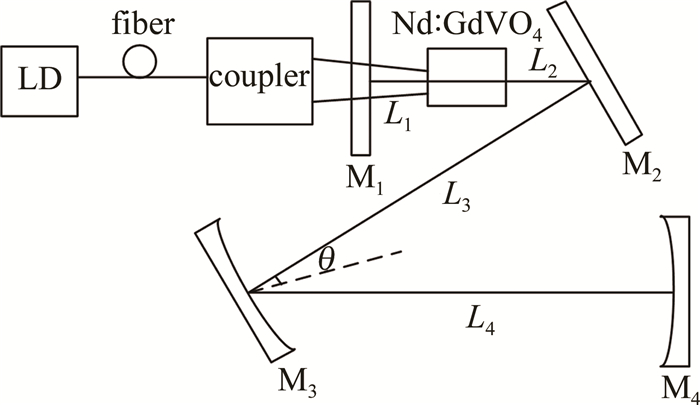

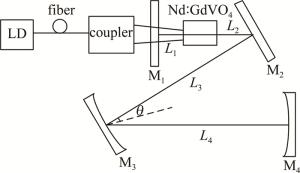
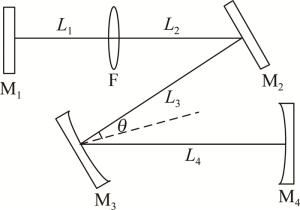
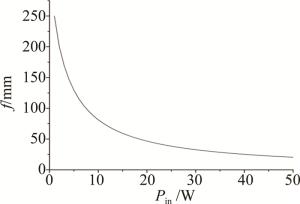
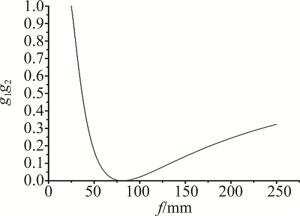
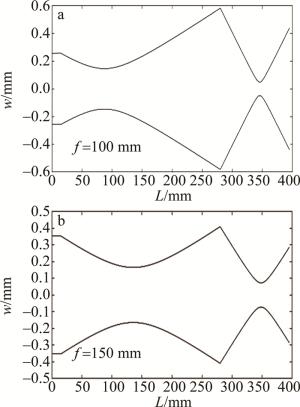

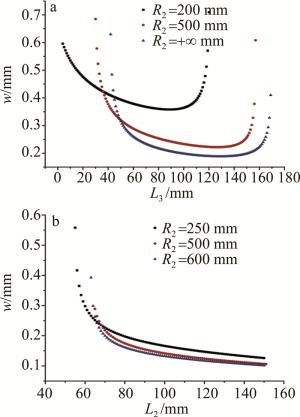
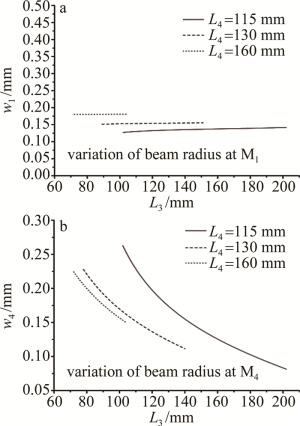
 DownLoad:
DownLoad:
